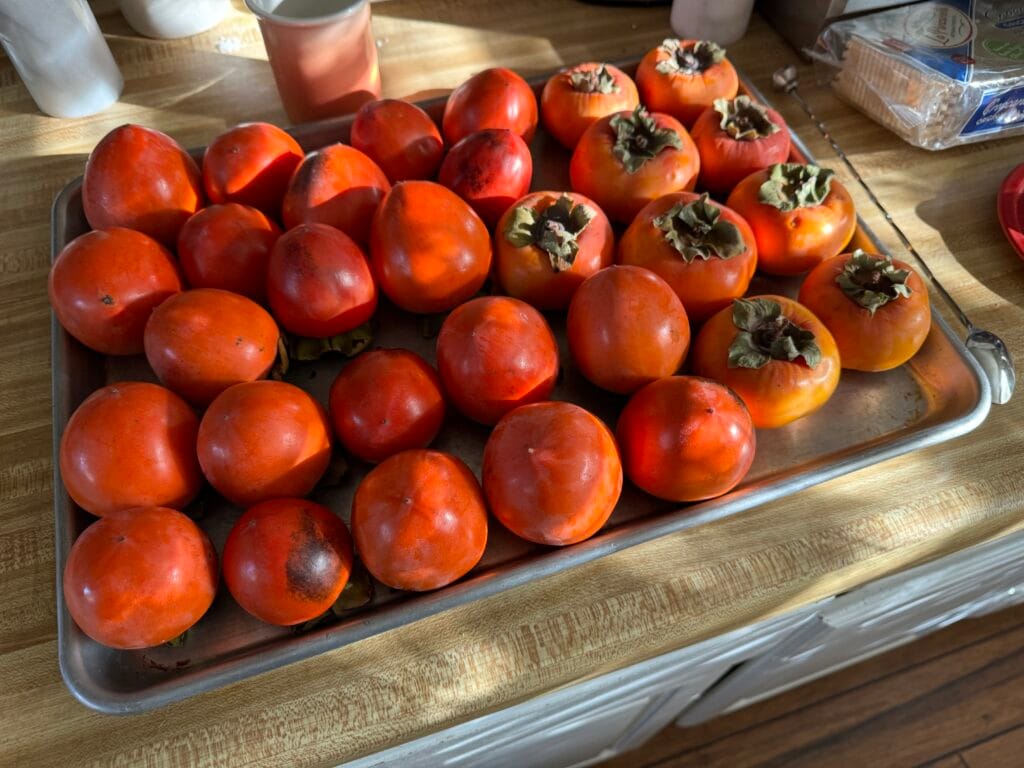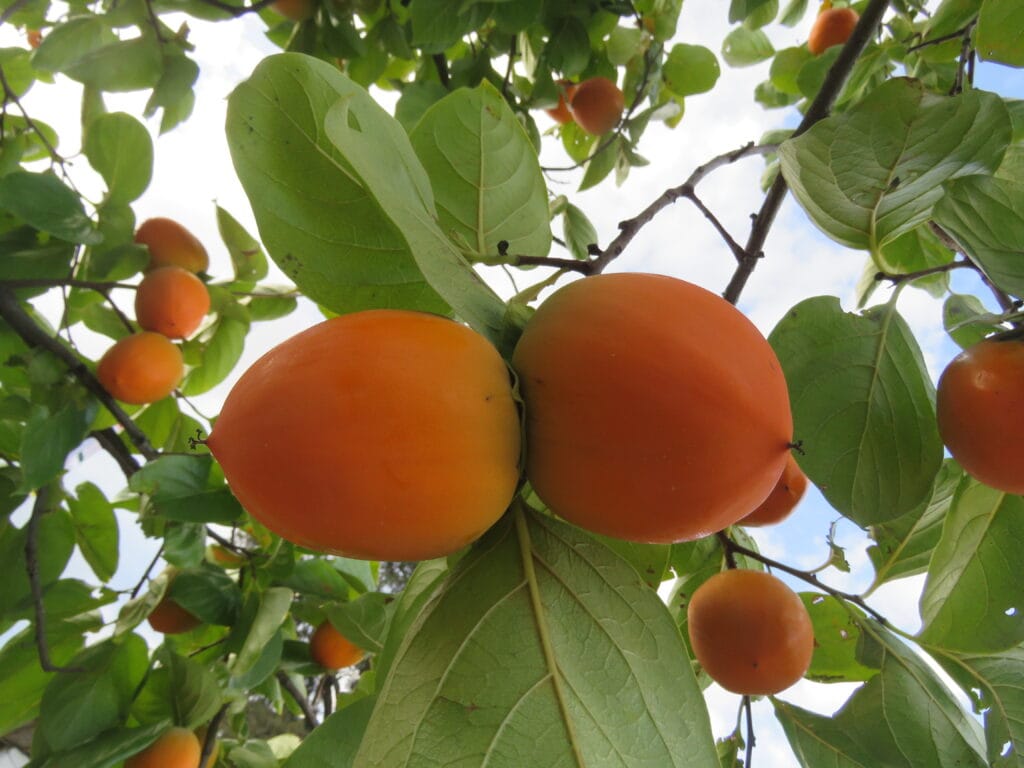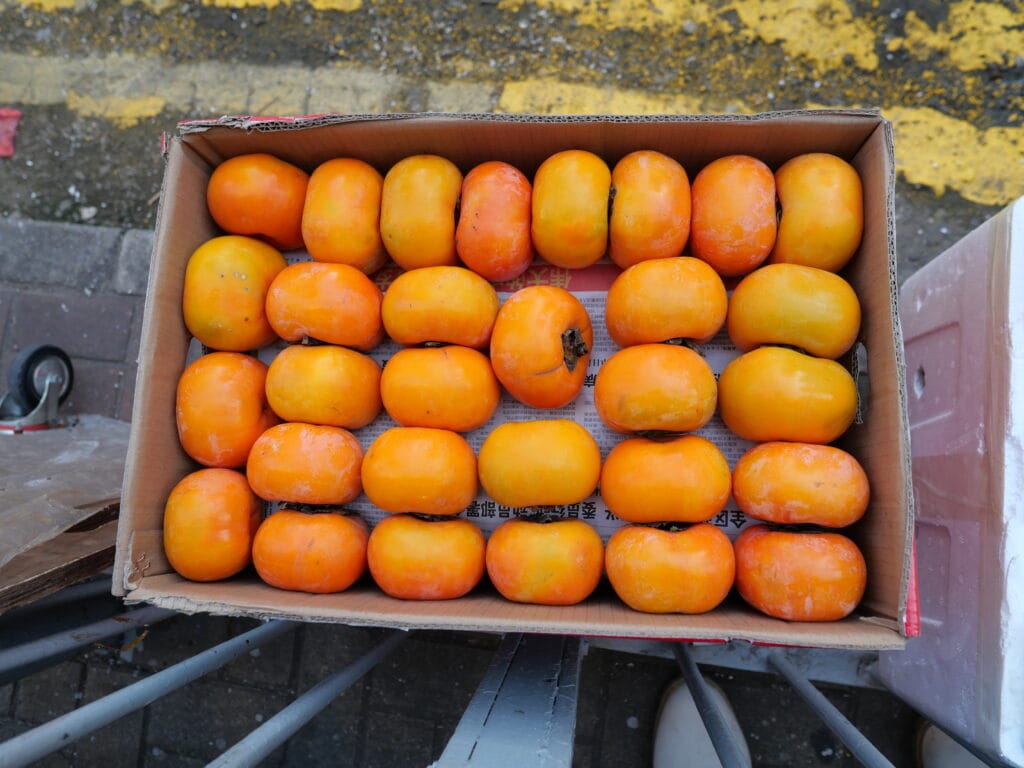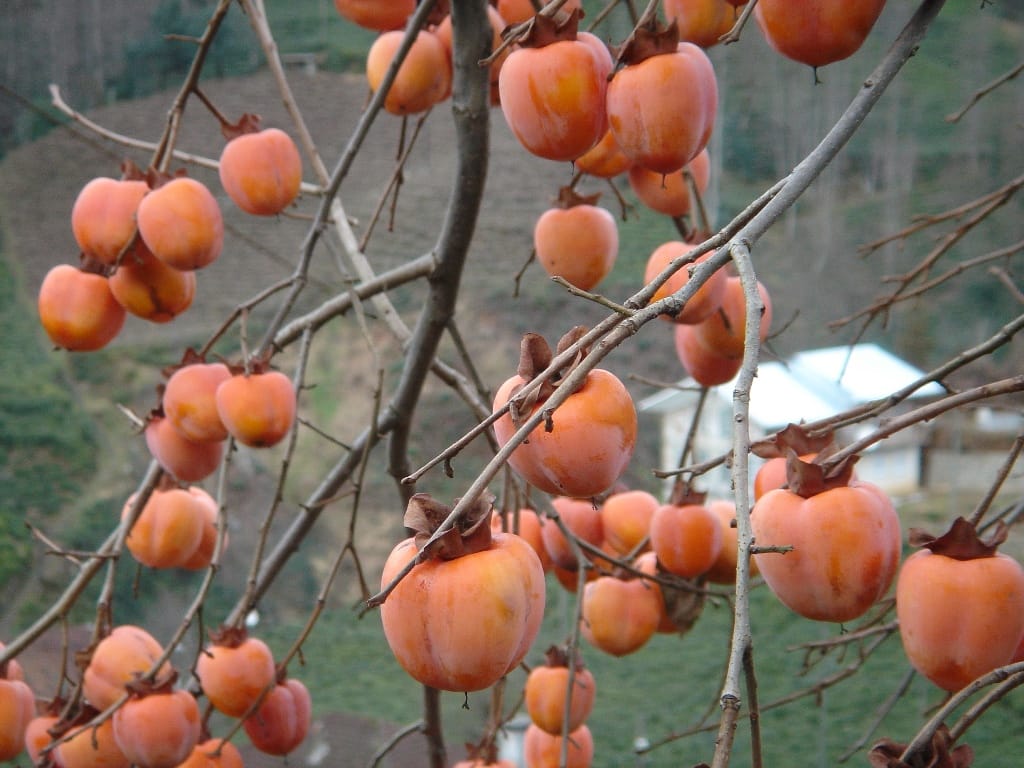Abstract
Persimmon (Diospyros kaki), a vibrant orange fruit, is known for its sweet flavor and remarkable health benefits.
Originating from Asia, this nutrient-dense fruit offers a range of benefits, including improved digestion, better heart health, and a robust immune system.
This article explores the benefits of Persimmon and its history, characteristics, environmental advantages, and economic significance of persimmons.
Additionally, it delves into their culinary uses, nutritional benefits, and cultural importance while highlighting the challenges associated with their conservation.
Introduction
Persimmons (Diospyros kaki), often referred to as the “divine fruit,” are highly regarded for their rich taste and health-enhancing properties.
These small, orange-colored fruits are celebrated not only for their sweet, honey-like flavor but also for their myriad health benefits.
Packed with essential nutrients, persimmons have become a staple in many cuisines and are a vital component of traditional medicine.
Their versatility allows them to be consumed fresh, dried, or incorporated into recipes, making them an indispensable fruit in many cultures.
This article delves deeper into the benefits of persimmons, highlighting their nutritional value, environmental contributions, and culinary applications, while also addressing challenges in their cultivation and conservation.
History Of Persimmon
Persimmons trace their origins to ancient China, where they have been cultivated for over 2,000 years.
Historical records indicate that the fruit was highly valued by Chinese royalty and used in traditional medicine for its purported health benefits.
From China, persimmons spread to neighboring countries like Korea and Japan, where they became deeply integrated into local cuisines, art, and traditions.
In Japan, persimmons are associated with autumn and are often dried to create “hoshigaki,” a delicacy enjoyed during festive occasions.
The fruit made its way to the United States and Europe in the 19th century, brought by traders and horticulturalists. Its adaptability to various climates and soil types facilitated its spread, leading to its cultivation in Mediterranean regions and beyond.
Today, persimmons are grown worldwide, with China remaining the largest producer, followed by countries like South Korea, Japan, and Spain.
Characteristics Of Persimmon
Persimmons are round or oval-shaped fruits with a glossy orange skin. There are two primary types: astringent (Hachiya) and non-astringent (Fuyu).

Astringent persimmons must ripen fully to eliminate their bitter taste, while non-astringent varieties can be consumed while still firm. The fruit’s pulp is sweet, juicy, and rich in fiber, vitamins A and C, and antioxidants.
Environmental Benefits
Persimmon trees contribute to environmental sustainability. They improve air quality by absorbing carbon dioxide and releasing oxygen. The trees also prevent soil erosion and support biodiversity by providing habitat and food for various animal species.
Benefits Of Persimmon
Here are some benefits of Persimmon:

- Health Benefits:
- Rich in Antioxidants: Persimmons are high in antioxidants like beta-carotene, which combat free radicals and reduce oxidative stress.
- Heart Health: The fruit’s fiber and potassium content help reduce bad cholesterol, regulate blood pressure, and improve overall cardiovascular health.
- Boosted Immunity: High levels of vitamin C enhance the immune system’s functionality, protecting against common illnesses.
- Improved Digestion: Dietary fiber promotes gut health, prevents constipation, and supports the growth of beneficial gut bacteria.
- Weight Management: Low in calories but rich in fiber, persimmons are an excellent addition to weight-loss diets.
- Anti-Inflammatory Properties: The fruit’s bioactive compounds help reduce inflammation, potentially lowering the risk of chronic diseases.
- Skin and Eye Health: Persimmons contain nutrients like vitamin A, lutein, and zeaxanthin, which support healthy skin, reduce signs of aging, and protect against eye-related disorders like macular degeneration.
- Bone Health: The fruit’s manganese and vitamin K content contribute to stronger bones and improved mineral density.
- Cancer Prevention: The antioxidants and phytonutrients in persimmons may reduce the risk of certain cancers by inhibiting tumor growth and protecting cells from DNA damage.
Uses
Persimmons are versatile fruits used in various forms:
- Eaten fresh or dried as a snack.
- Incorporated into baked goods like cakes, muffins, and bread.
- Processed into jams, jellies, and puddings.
- Used in skincare products for their anti-aging properties.
Economic Significance
Persimmons hold significant economic value, particularly in Asia, where they are a major agricultural product. Countries like China, Japan, and South Korea dominate global persimmon production and export, generating substantial revenue for farmers and economies.
Market
The global persimmon market is thriving, with increasing demand for fresh and processed forms of the fruit. Health-conscious consumers and the growing popularity of exotic fruits drive this trend. Export markets in North America and Europe continue to expand.
Conservation and Challenges
Persimmon cultivation faces challenges, including:
- Pests and diseases affecting crop yield.
- Climate change impacting growth conditions.
- Overharvesting threatening wild persimmon populations. Efforts to develop disease-resistant varieties and sustainable farming practices are essential for the fruit’s conservation.
Interesting Facts About Persimmon
Here are some interesting facts about Persimmons:

- The word “persimmon” comes from the Algonquin term “pesimin,” which means “dry fruit.”
- Diospyros kaki translates to “divine fruit of Zeus,” highlighting its esteemed status in ancient cultures.
- Persimmons are celebrated during the annual Kakigori Festival in Japan, where they are used in various sweet dishes.
- The oldest known persimmon tree is over 300 years old and still bears fruit.
- In Korea, dried persimmons (gotgam) are often used as offerings in ancestral rituals.
- Persimmons are a natural remedy in traditional Chinese medicine for treating high blood pressure and improving digestion.
Culinary Uses Of Persimmon
Persimmons are prized in global cuisines:

- Added to salads for a sweet twist.
- Used in smoothies and juices.
- Made into traditional desserts like Korean “gotgam” and Japanese “hoshigaki.”
- Used as a topping for yogurt, oatmeal, or pancakes for added sweetness and nutrition.
Nutritional Benefits
Persimmons are a powerhouse of nutrients:
- Low in calories but rich in dietary fiber.
- Excellent source of vitamins A, C, and E.
- Contain essential minerals like manganese, copper, and potassium.
- High in phytonutrients and flavonoids, which support overall health.
Traditional Dishes
- Korea: Gotgam (dried persimmon)
- Japan: Hoshigaki (dried persimmon)
- China: Persimmon pudding
Caution
While persimmons are safe for most people, excessive consumption may lead to bezoar formation due to their high tannin content.
This condition, though rare, can cause digestive blockages, especially when unripe persimmons are consumed.
Individuals with allergies or sensitivities should approach persimmons cautiously, as the fruit’s components may trigger mild to severe reactions.
People with low blood pressure or taking medications for heart conditions should consult a healthcare professional before incorporating large quantities of persimmons into their diet due to their potassium content.
Moderation is key to enjoying persimmons without adverse effects.
Conclusion
Persimmons (Diospyros kaki) offer a blend of delicious taste, nutritional richness, and cultural significance.
From promoting health to supporting ecosystems, their benefits are vast and multifaceted. These fruits not only provide essential nutrients but also contribute to environmental sustainability and economic growth.
However, addressing challenges in cultivation and conservation is crucial to ensuring their availability for future generations.
By fostering sustainable practices and spreading awareness of their numerous advantages, persimmons can continue to enrich diets and enhance lives worldwide, securing their legacy as one of nature’s most remarkable fruits.
Also Read: Benefits of Makahiya (Mimosa pudica) A Detailed Analysis of its History, Benefits, Uses, Facts and safety
Well, what do you think about the article?
Did you enjoy reading “Benefits of Persimmon (Diospyros kaki) A Detailed Analysis of its History, Benefits, Uses, Facts and safety“?
We really hope that you have found this article informative and engaging. If you have any thoughts or comments about this post, please feel free to share them in the comment section below. We appreciate your feedback and would be glad to hear from you.
To see more content like this check the gardening section of Money For My Beer.

